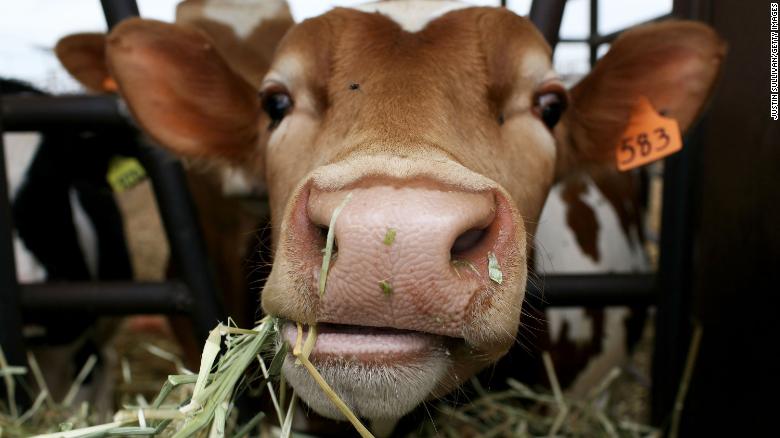World must reach ‘peak meat’ by 2030 to meet climate change targets, scientists warn

In a letter to The Lancet Planetary Health Journal, they said all but the poorest countries needed to set a time frame for livestock production to stop growing, since the meat and dairy sector is responsible for such a large proportion of emissions.The scientists called on governments to identify the largest emissions sources or land-occupiers in the livestock sector and set reduction targets to help fight the risk of global temperatures rising by more than the “safe” limit of 1.5-2 degrees Celsius above pre-industrial levels.”The reduction we need means we need deep transformation in every sector,” Helen Harwatt, an environmental social scientist at Harvard Law School and lead author of the letter, told CNN. “To reduce to 1.5 C, we need to remove massive amounts of CO2 from the atmosphere.”We’re suggesting agriculture transitions to optimal systems, and that’s plant-based.”The letter, signed by 50 experts in the field, said that if the livestock sector were to continue on its present trajectory, it would account for almost half of the emissions target by 2030.The scientists called for the agricultural sector to “diversify food production” by replacing animals with foods that have a low impact on the environment, such as pulses, grains, fruits, vegetables, nuts and seeds.The letter said that when grazing land is not required or is unsuitable for horticulture or arable production, it should, where possible, be repurposed by restoring native vegetation such as forest, which acts as a “carbon sink.” A carbon sink is anything that absorbs more carbon that it releases, according to the Food and Agriculture Organization (FAO).Stuart Roberts, vice president of the National Farmers’ Union of England and Wales, told CNN in a statement: “To say that cutting livestock numbers everywhere is the most efficient way of reducing emissions massively overgeneralises a situation that differs significantly across the world, and can hinder the countries that are practicing sustainable farming methods and have an ambition to do more.”We also recognise the value of our carbon sinks and use our extensive grasslands to graze animals, which is hugely beneficial for the soil and helps locks up carbon.”Grazing cattle is the most sustainable way to use land for food production which is unsuitable for growing any other crop,” he said. “By using our grasslands in this way we can sequester carbon at the same time as turning inedible grass into a highly nutritious protein which our growing population can enjoy.”Harwatt said there were “quite a few different reasons for focusing on livestock,” as the sector was a “hotspot” for potential change.”It offers these really key opportunities to give us a better chance of meeting those goals, not only to reduce emissions but to repurpose land animal agriculture occupies,” she said. “Some is on deforested land, and reforesting large areas of this land will be needed to help meet the goals of the Paris Agreement.”The other issue with temperature and emissions is methane. Animal agriculture is the biggest source of methane emissions.”Scientists agree that CO2 emissions must not exceed 420 billion tonnes before the end of this century, and approximately 720 billion tonnes of CO2 must be removed from the atmosphere to limit global warming to 1.5 degree Celsius.Reestablishing vegetation is viewed as the best large-scale option for removing CO2 from the atmosphere and preventing atmospheric warming, which could result in the loss of coral reefs, ice sheets and life-supporting ecosystems. The letter said the process of returning areas of farmland to their natural state “must begin immediately to be effective within the required timescale of reaching net zero emissions by 2050.”They warned that high- and middle-income countries should not outsource livestock production to other countries but instead reduce demand for livestock products in order to meet the terms of the Paris climate change agreement.Since the first Intergovernmental Panel on Climate Change assessment report in 1990, the production of meat, milk, and eggs increased from 758 million tonnes to 1.247 billion tonnes in 2017, the scientists said, citing FAO data, and it is projected to increase further.”Even if everything was done, it doesn’t mean other sectors don’t need to change,” added Harwatt. “Every industry needs to change deeply and rapidly.”We’re beyond the point of it being a niche agenda.”







